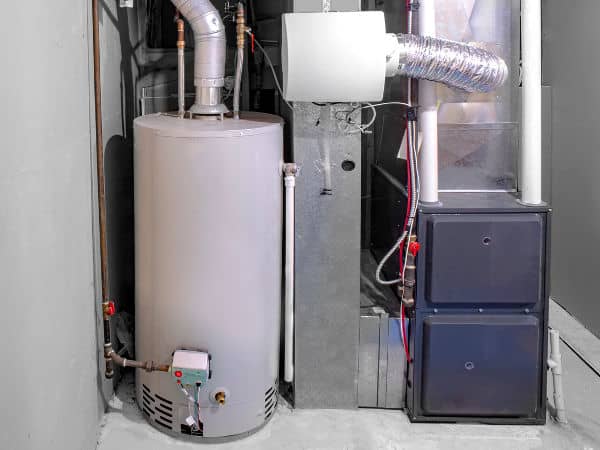How to Maintain Your Home's Hot Water System EffectivelyEasy Ways to Maintain Your Home's Hot Water System Effectively
How to Maintain Your Home's Hot Water System EffectivelyEasy Ways to Maintain Your Home's Hot Water System Effectively
Blog Article
What're your ideas on How to Maintain Your Water Heater & Prolong its Life?

Hot water is essential for daily comfort, whether it's for a refreshing shower or cleaning meals. To ensure your hot water system runs efficiently and lasts longer, normal upkeep is crucial. This post gives sensible ideas and insights on how to preserve your home's hot water system to prevent disruptions and pricey fixings.
Intro
Preserving your home's hot water system might seem overwhelming, yet with a few simple actions, you can guarantee it operates efficiently for many years to find. This guide covers every little thing from recognizing your hot water system to DIY maintenance pointers and knowing when to call in specialist help.
Importance of Preserving Your Hot Water System
Normal upkeep not just extends the life-span of your hot water system but additionally guarantees it operates successfully. Ignoring upkeep can cause decreased performance, higher energy expenses, and even early failing of the system.
Signs Your Hot Water System Needs Upkeep
Knowing when your warm water system needs attention can stop major concerns. Look out for indicators such as inconsistent water temperature level, unusual noises from the heating unit, or rusty water.
Recognizing Your Hot Water System
Prior to diving right into maintenance jobs, it's practical to understand the standard components of your warm water system. Typically, this consists of the water heater itself, pipelines, anode rods, and temperature level controls.
Monthly Upkeep Tasks
Regular regular monthly checks can help catch minor concerns before they rise.
Flushing the Hot Water Heater
Flushing your hot water heater gets rid of sediment accumulation, improving effectiveness and lengthening its life.
Checking and Changing Anode Rods
Anode rods stop rust inside the tank. Examining and changing them when worn out is vital.
Inspecting and Changing Temperature Level Settings
Adjusting the temperature level setups ensures ideal efficiency and safety.
DIY Tips for Maintenance
You can do numerous maintenance tasks on your own to maintain your hot water system in top problem.
Looking for Leaks
On a regular basis check pipelines and connections for leaks, as these can cause water damages and greater bills.
Checking Stress Relief Valves
Evaluating the stress safety valve guarantees it functions correctly and stops too much stress buildup.
Shielding Pipelines
Insulating hot water pipes minimizes warmth loss and can save energy.
When to Call an Expert
While do it yourself upkeep is beneficial, some issues need expert know-how.
Facility Concerns Requiring Specialist Aid
Instances include major leaks, electrical issues, or if your water heater is regularly underperforming.
Routine Expert Maintenance Perks
Expert maintenance can include complete assessments, tune-ups, and making sure conformity with safety and security criteria.
Final thought
Routine maintenance of your home's hot water system is important for efficiency, longevity, and expense savings. By complying with these ideas and recognizing when to look for professional help, you can ensure a dependable supply of hot water without unforeseen disruptions.
How to Maintain an Instant Hot Water Heater
Before tinkering with your hot water heater, make sure that it’s not powered on. You also have to turn off the main circuit breaker and shut off the main gas line to prevent accidents. Also turn off the water valves connected to your unit to prevent water from flowing into and out of the appliance. 2. When you’re done, you have to detach the purge valves’ caps. These look like the letter “T” and are situated on either side of the water valves. Doing so will release any pressure that has accumulated inside the valves while at the same time avoid hot water from shooting out and burning your skin. 3. When the purge valves’ caps are removed, you have to connect your hosing lines to the valves. Your unit should have come with three hoses but if it didn’t, you can purchase these things from any hardware or home repair shops. You can also get them from retail stores that sell water heating systems. Read the user’s manual and follow it to complete this task properly. When the hosing lines are connected, open the purge port’s valves. 4. You should never use harsh chemical cleaners or solutions when cleaning your unit. Make use of white vinegar instead. It should be undiluted and you’ll probably use about 2 gallons. 5. Now flush your water heater. This task should probably take about 40 minutes. We can’t give you specific directions for this because the procedure is carried out depending on the type, model and brand of your heater. With that being said, refer to the user’s manual. 6. When you’re done draining the unit, you have to turn off the purge port valves again. Remove the hosing lines that you earlier installed on each of the water valves. Put the valve caps (purge port) back in their respective places and be very careful so as not to damage the rubber discs that are found inside these caps. 7. Now that everything’s back in place, check your user’s manual again to find out how to reactivate your water heating system. 8. Once it is working, turn one of your hot water faucets on just to let air pass through the heater’s water supply pipes. Leave the tap on until water flows smoothly out of it. https://www.orrplumbing.com/blog/2014/september/how-to-maintain-an-instant-hot-water-heater/

Do you enjoy reading about Water Heater Maintenance Tips You Can't Afford to Forget? Post a short review directly below. We will be delighted to find out your reactions about this article. Hoping to see you back again soon. Sharing is nice. You won't know, you might be helping someone out. I enjoy your readership.
Here Report this page